- THE ECB BLOG
The “art” of central banking on screen
14 February 2024
Central banks have been collecting art for a long time. While the works were previously only accessible at their physical locations, more and more central banks now make their collections available online. The ECB Blog showcases four collections you can enjoy from wherever you are.
Central bankers sometimes speak of their profession as an art – perhaps to make it seem more vivid and brilliant. But there is actual art in their institutions: most central banks collect paintings, sculptures and other pieces of art, some even building stately collections over centuries. And while these artworks were traditionally only accessible in the banks’ buildings or at nearby museums, some central banks are now taking their exhibits online for everyone to experience. The ECB Blog takes you on a tour.
Banca d’Italia: collateral art
For the Italian central bank, digitising its large collection solved a bit of a problem. The works themselves are displayed in offices all over Italy, and thus “difficult to access and enjoy as a whole.” Consequently, the collection’s digital version is conceived as a virtual museum. Online visitors can parse twenty curated tours displaying a total of 300 works, ranging from Antiquity, ancient Asian sculptures and tapestries to twentieth-century avantgarde movements and abstract paintings.
La seggiola dell’uomo strano
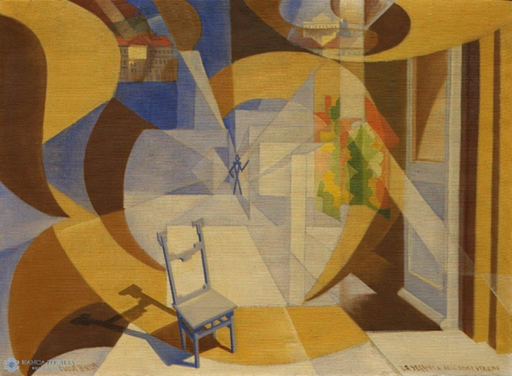
Giacomo Balla, oil on canvas, 1929.
The Banca d’Italia came into possession of its first pieces in a rather dramatic fashion: business mogul Riccardo Gualino lost his fortune in the aftermath of the 1929 financial crisis, forcing him to sign his substantial art collection over to the central bank. While pieces by Cézanne, Manet and Modigliani were eventually sold, the Gualino collection is still very much worth a virtual visit, especially by those interested in ancient Asian art as well as late nineteenth and early twentieth century French and Italian art.
Paesaggio campestre al tramonto

Claude Monet, oil on canvas, ca. 1863-64.
Banco de España: Goya and the director
Like its Italian counterpart, the Banco de España displays its digitised collection in themes. Under the poetically titled tab “Itineraries”, visitors can find collections such as “Flowers (and fruits) from other worlds”, “The Banco de España’s collection of timepieces” or “Face to face with history”. About the rationale behind this structure, the curators note: “Works of art help us to understand history and to cast a critical look towards the future”. In addition to its online display, the Banco de España also hosts art exhibitions the traditional way at its headquarter in Madrid.
This Painting Should Be Installed by an Accountant
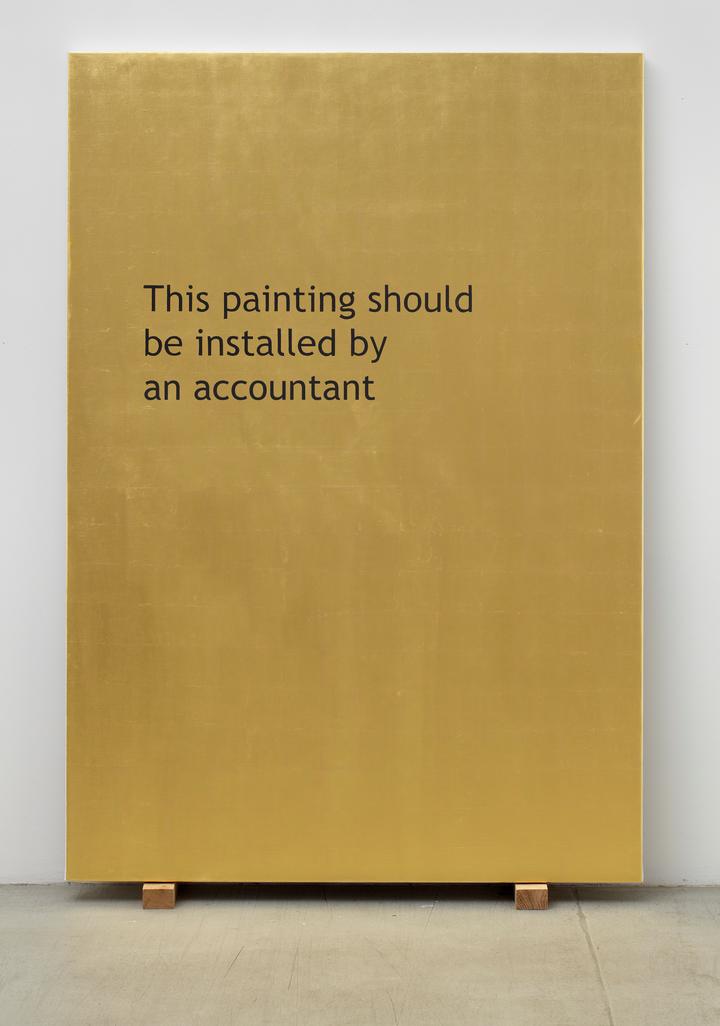
Jonathan Monk, fine gold leaf and acrylic on canvas, 2011.
Among the most impressive features of the collection are the pieces by Francisco de Goya. In fact, Goya is deeply intertwined with the history of the bank’s collecting efforts. In the 1780s the newly founded bank – at the time known as the Banco Nacional de San Carlos – commissioned portraits of its three directors. José de Toro-Zambrano y Ureta chose to be painted by Goya. The portrait by the at the time up-and-coming romantic painter was one of the earliest works in Banco de España’s collection.
José de Toro-Zambrano y Ureta
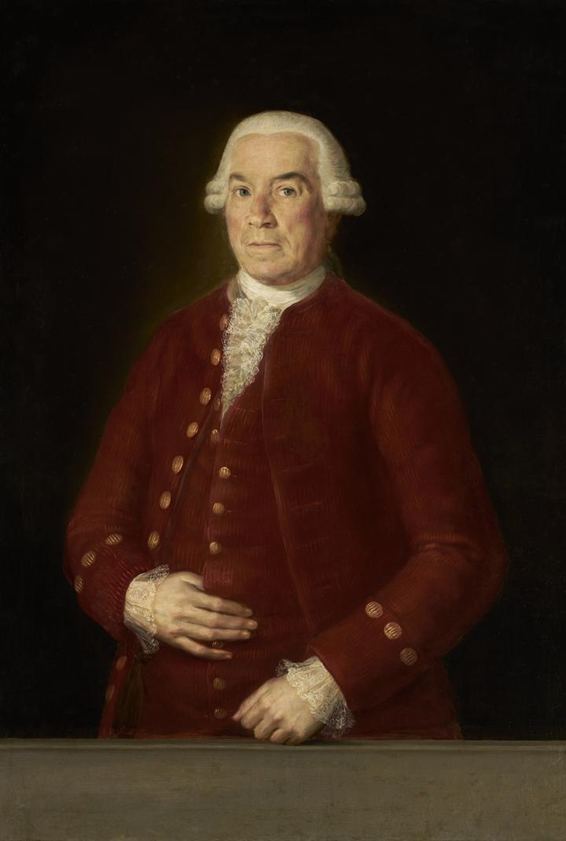
Francisco de Goya y Lucientes, oil on canvas, 1785.
Lietuvos Bankas: art and architecture
The central banks of some of the euro area’s smaller countries also have quite a substantial history of collecting art. The Lithuanian central bank recently celebrated its 100th anniversary with an art album showcasing over 200 works by Lithuanian and international artists. In fact, its collection dates back to the construction of its Kaunas home in the 1920s: an artist competition resulted in spectacular sculptures as well as wall and ceiling paintings throughout the neoclassical building.
Coffered band decorating the ceiling of the Operations Hall of the building of Lietuvos Bankas in Kaunas
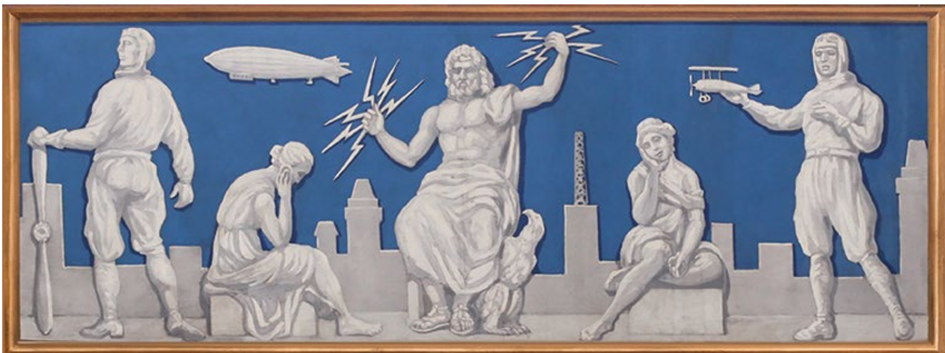
Petras Kalpokas, Olga Dubeneckienė Kalpokienė, Vladas Didžiokas and Jonas Janulis, 1929. Photo: Arūnas Baltėnas.
Ornamental rosette in the dome of the former Panevėžys branch of Lietuvos Bankas

Juozas Zikaras, 1931. Photo: Arūnas Baltėnas.
Only 500 copies were printed, but the album can be viewed online as well. Like for the Banca d’Italia, going digital solves the problem of public access – which is particularly acute for Lietuvos Bankas because much of the art is integrated into architecture. “It is not often that a visitor to the bank has the opportunity to walk through the offices, corridors, meeting rooms or courtyards and see the artworks”, writes Asta Ravaitytė-Kučinskienė in the introduction to the album. “By publishing an album of artwork, the Bank of Lithuania demonstrates openness and a dialogue with the public, adding an important artistic mark to its social image”.
The Coast
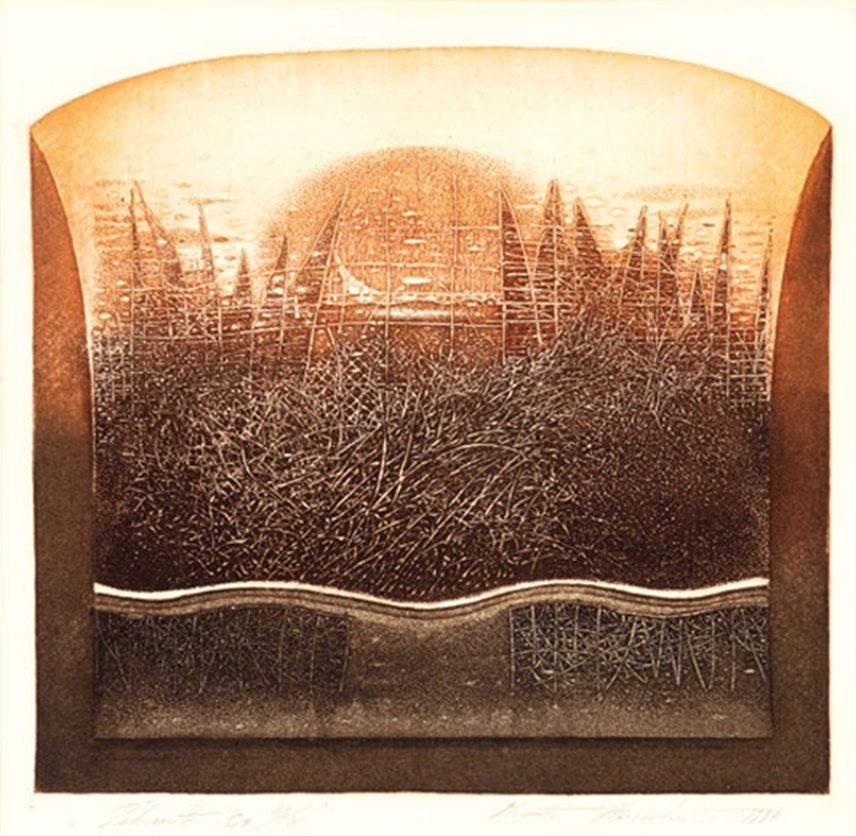
Birutė Stančikaitė, paper, etching, aquatint, 1994.
The ECB: young art from all over Europe
The ECB has taken a decidedly multinational approach to collecting art. As of now, the ECB collection contains 896 pieces, many of them by young, upcoming European artists.
A good share of these pieces come from the long-standing tradition to host exhibitions highlighting contemporary art from EU member states. Every year, the ECB, in cooperation with the respective national central bank, displays artworks from one EU country in the historic part of its headquarters in Frankfurt. The ECB would typically acquire a few pieces from these exhibitions. This way, the permanent collection has grown to include paintings, drawings, photography, media art and sculpture by artists such as Nevin Aladaǧ, Ólafur Eliasson, ULAY, Esther Stocker and Barbara Klemm. Some of the artworks are embedded in the architecture, for instance the 17-metre-tall sculpture by Giuseppe Penone titled “Gravity and Growth”, which stands in front of the main building.
Gravity and Growth
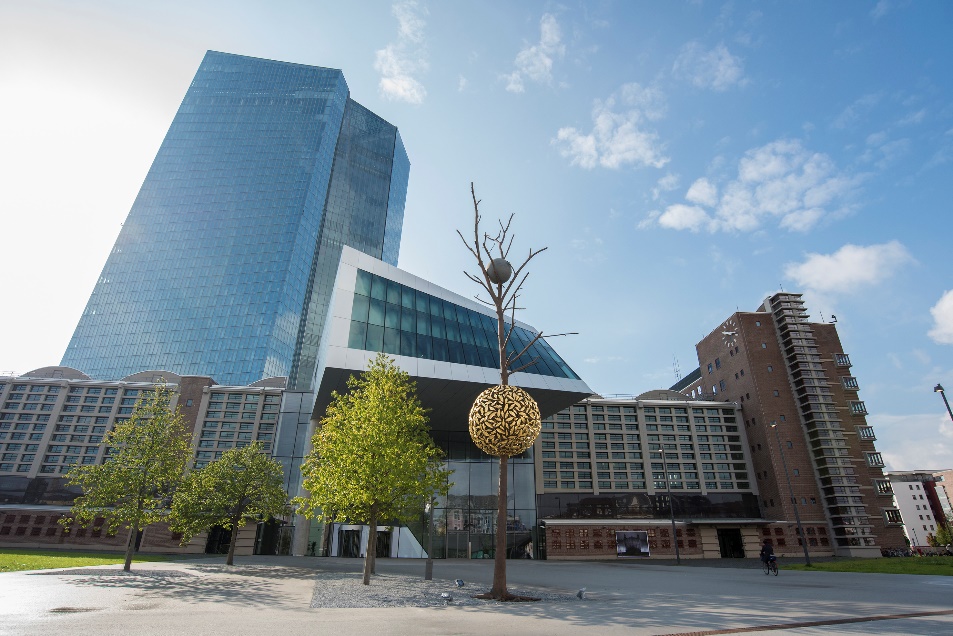
Giuseppe Penone, bronze, granite, gold leaf, 2015.
Unfortunately, providing access to these artworks is not a simple task. For security reasons, visitors must register for tours in order to enter the ECB’s buildings, and even then they can only enter certain areas. We created the ECB Art App to make our collection more easily accessible to the public. Visitors can browse both themed collections, for instance on sustainability and European identity, or enjoy some of our recent country-specific exhibitions.
Candy Stripes
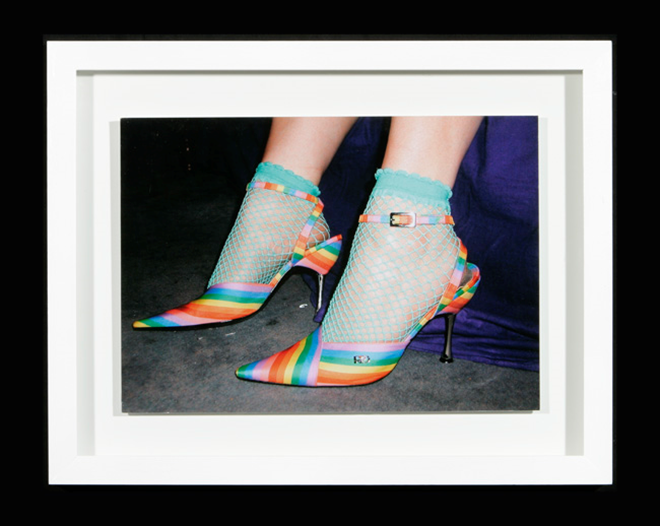
Amy O’Riordan, lambda print on aluminium, 2004.
If you want to see more art online, see for instance the central bank collections of Austria, Belgium, Cyprus, Germany, Malta and the Netherlands.
The views expressed in each blog entry are those of the author(s) and do not necessarily represent the views of the European Central Bank and the Eurosystem.




